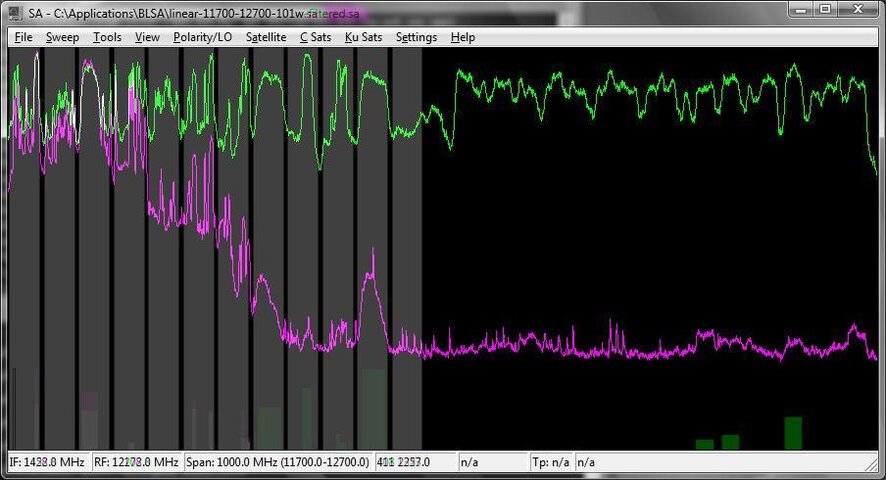So let me start by saying that RF is not my specialty. 
I've been looking at some data sheets recently for low pass filters. Particularly a DC to 825Mhz filter that has an interesting insertion loss graph.
From the specs:
What I'm wondering about is what does it take to "quiet down" the DBS birds? Looking at satbeams and similar data the power difference for my area between, for example, 119° and 123° is roughly 4.5dBW.
Based on the data above it appears this particular filter with a standard ku LNBF (LO 10750) would provide 1.19 to 3.89 dB of signal attenuation on the first ~17 transponders of a FSS satellite. (I/F 950mhz - 1300mhz) At the same time, it would provide at least 22.09 dB of attenuation, again on a standard ku LNBF, beginning with the first DBS transponder with an I/F of 1474Mhz.
So my question is, would this type of filtering work when combined with a basic tone style signal meter to effectively filter out any DBS satellite being picked up on a standard ku LNBF? This would make a simple analog meter much more useful for dish pointing. The filter I was looking at (VLFX-825) is not impedance matched or the correct connector type, but I'm really just thinking conceptually here.
I've been looking at some data sheets recently for low pass filters. Particularly a DC to 825Mhz filter that has an interesting insertion loss graph.
From the specs:
Code:
Mhz Insert Loss (dB)
850 0.99
950 1.19
1100 1.58
1300 3.89
1400 11.97
1475 22.09
1800 39.04What I'm wondering about is what does it take to "quiet down" the DBS birds? Looking at satbeams and similar data the power difference for my area between, for example, 119° and 123° is roughly 4.5dBW.
Based on the data above it appears this particular filter with a standard ku LNBF (LO 10750) would provide 1.19 to 3.89 dB of signal attenuation on the first ~17 transponders of a FSS satellite. (I/F 950mhz - 1300mhz) At the same time, it would provide at least 22.09 dB of attenuation, again on a standard ku LNBF, beginning with the first DBS transponder with an I/F of 1474Mhz.
So my question is, would this type of filtering work when combined with a basic tone style signal meter to effectively filter out any DBS satellite being picked up on a standard ku LNBF? This would make a simple analog meter much more useful for dish pointing. The filter I was looking at (VLFX-825) is not impedance matched or the correct connector type, but I'm really just thinking conceptually here.




